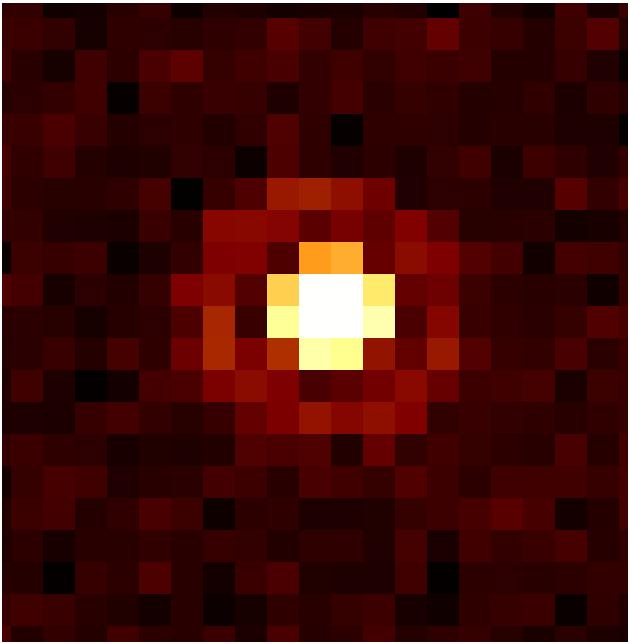
caption1
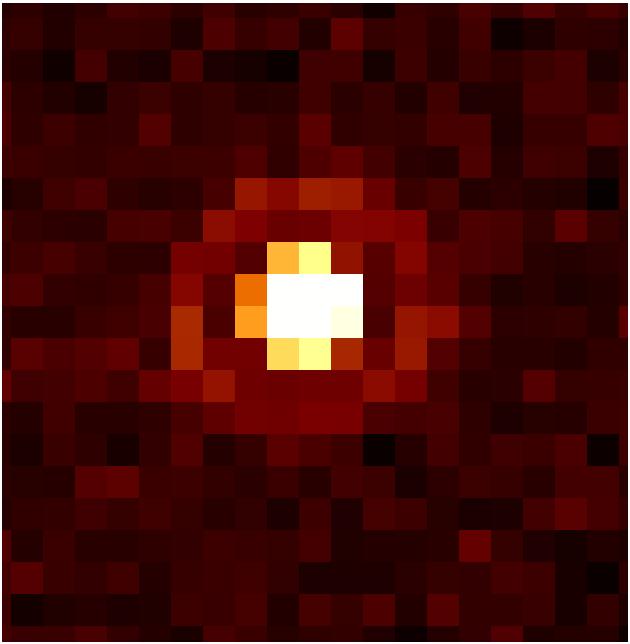
caption1
Principal:
Deputy:
Analyst:
AORKEYS:
Last Updated:
| AORID |
Leg
Length (degrees) |
#
Legs |
Cross-scan
Offset (arcsec) FWD -> REV, REV->FWD |
| 0007336192 |
1.5 |
1 |
0 |
| 0007336448 |
0.5 |
2 |
64 |
| 0007336704 |
0.5 |
2 |
148 |
| 0007336704 |
0.5 |
2 |
302 |
| 0007337216 |
1.0 |
6 |
276, 111 |
| 0007337472 |
6.0 |
2 |
217 |
 caption1 |
 caption1 |
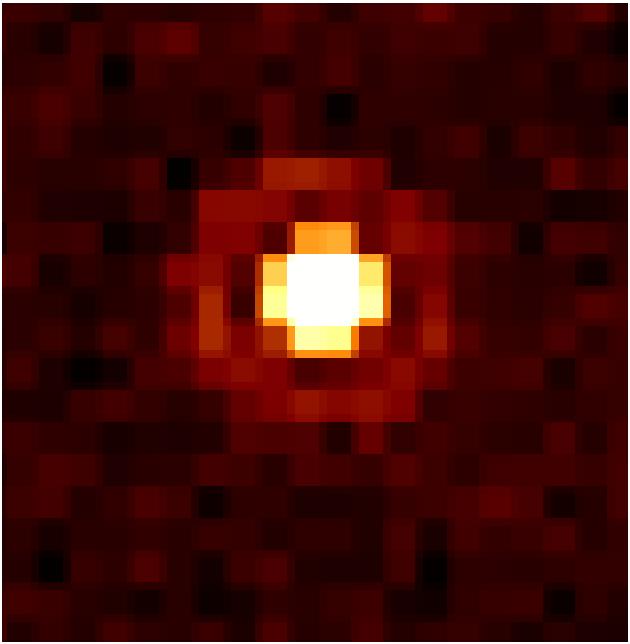
| OMEGA
(millarcsec/sec)/RAMPDIR (0=FWD, 1=REV) |
DCENUM |
Time
(real seconds) |
Boresight
Motion (arcsec) |
Predicted
SCANABS (coarse DAC) |
CSMM
Offset on sky (arcsec) |
Offset
from DCE0 (") |
Offset
from Prior DCE (") |
Prior
DCE Offset (+3% CSMM gain) |
| 6520/0 |
0 |
0 |
0 |
2004.625 |
0 |
0 |
0 |
0 |
| 6520/0 |
1 |
4.725 |
30.807 |
2032.375 |
-14.786 |
16.021 |
16.021 |
15.577 |
| 6520/0 |
2 |
9.45 |
61.614 |
1999.875 |
2.531 |
64.145 |
48.124 |
48.64 |
| 6520/0 |
3 |
14.175 |
92.421 |
2027.625 |
-12.255 |
80.166 |
16.021 |
15.577 |
| 6520/0 |
4 |
18.9 |
123.228 |
1995.125 |
5.061 |
128.289 |
48.123 |
48.64 |
| 6250/0 |
5 |
23.625 |
154.035 |
2022.875 |
-9.723 |
144.312 |
16.023 |
15.58 |
| 6520/0 |
6 |
28.35 |
184.42 |
1990.375 |
7.592 |
192.434 |
48.122 |
48.64 |
| 6520/0 |
7 |
33.075 |
215.649 |
2018.125 |
-7.192 |
208.457 |
16.023 |
15.58 |
| 6520/0 |
8 |
37.8 |
246.456 |
1985.625 |
10.122 |
256.578 |
48.121 |
48.64 |
| 6520/0 |
9 |
42.525 |
277.263 |
2013.375 |
-4.662 |
272.601 |
16.023 |
15.58 |
| 6520/0 |
10 |
47.25 |
308.070 |
1980.875 |
12.653 |
320.723 |
48.122 |
48.64 |
| 6520/0 |
11 |
51.975 |
338.877 |
2008.625 |
-2.131 |
336.746 |
16.023 |
15.58 |
| 6520/0 |
12 |
56.7 |
369.684 |
1976.125 |
15.184 |
384.868 |
48.122 |
48.64 |
| 6520/0 |
13 |
61.425 |
400.491 |
2003.875 |
0.4 |
400.891 |
16.023 |
15.58 |
| 6520/0 |
14 |
66.15 |
431.298 |
1971.375 |
17.715 |
449.013 |
48.122 |
48.64 |
| 6520/0 |
15 |
70.875 |
462.105 |
1999.125 |
2.93 |
465.035 |
16.022 |
15.58 |
| 6520/0 |
16 |
75.6 |
492.912 |
1966.625 |
20.246 |
513.158 |
48.123 |
48.64 |
| 6520/0 |
17 |
80.325 |
523.719 |
1994.375 |
5.461 |
529.18 |
16.022 |
15.58 |
| 6520/0 |
18 |
85.05 |
554.526 |
1961.875 |
22.778 |
577.304 |
48.124 |
48.64 |
| 6520/0 |
19 |
89.775 |
585.333 |
1989.625 |
7.991 |
593.324 |
16.02 |
15.58 |
| 6520/0 |
20 |
94.5 |
616.140 |
1957.125 |
25.31 |
641.45 |
48.126 |
48.64 |
| 6520/0 |
21 |
99.225 |
646.947 |
1984.875 |
10.522 |
657.469 |
16.019 |
15.58 |
| 6520/0 |
22 |
103.95 |
677.754 |
1951.375 |
27.842 |
705.596 |
48.127 |
48.64 |
| 6520/0 |
23 |
108.675 |
708.561 |
1980.125 |
13.052 |
721.613 |
16.017 |
15.58 |
| 6520/0 |
24 |
113.4 |
739.368 |
1947.625 |
30.375 |
769.743 |
48.13 |
48.64 |
| 6520/0 |
25 |
118.125 |
770.175 |
2004.625 |
0 |
770.175 |
0.432 |
-0.479 |
| 6520/1 |
0 |
0 |
0 |
2009.375 |
0 |
0 |
0 |
0 |
| 6520/1 | 1 |
4.725 |
-30.807 |
1981.625 |
14.784 |
-16.023 |
-16.023 |
-15.58 |
| 6520/1 |
2 |
9.45 |
-61.614 |
2014.125 |
-2.531 |
-64.145 |
-48.122 |
-48.64 |
| 6520/1 |
3 |
14.175 |
-92.421 |
1986.375 |
12.253 |
-80.168 |
-16.023 |
-15.58 |
| 6520/1 |
4 |
18.9 |
-123.228 |
2018.875 |
-5.061 |
-128.289 |
-48.121 |
-48.64 |
| 6520/1 |
5 |
23.625 |
-154.035 |
1991.125 |
9.723 |
-144.312 |
-16.023 |
-15.58 |
| 6520/1 |
6 |
28.35 |
-184.842 |
2023.625 |
-7.592 |
-192.434 |
-48.121 |
-48.64 |
| 6520/1 |
7 |
33.075 |
-215.649 |
1995.875 |
7.192 |
-208.457 |
-16.023 |
-15.58 |
| 6520/1 |
8 |
37.8 |
-246.456 |
2028.375 |
-10.124 |
-256.58 |
-48.122 |
-48.64 |
| 6520/1 |
9 |
42.525 |
-277.263 |
2000.625 |
4.661 |
-272.602 |
-16.022 |
-15.58 |
| 6520/1 |
10 |
47.25 |
-308.070 |
2033.125 |
-12.655 |
-320.725 |
-48.123 |
-48.64 |
| 6520/1 |
11 |
51.975 |
-338.877 |
2005.375 |
2.131 |
-336.746 |
-16.021 |
-15.58 |
| 6520/1 |
12 |
56.7 |
-369.684 |
2037.875 |
-15.187 |
-384.871 |
-48.125 |
-48.64 |
| 6520/1 |
13 |
61.425 |
-400.491 |
2010.125 |
-0.4 |
-400.891 |
-16.02 |
-15.58 |
| 6520/1 |
14 |
66.15 |
-431.298 |
2042.625 |
-17.719 |
-449.017 |
-48.126 |
-48.64 |
| 6520/1 |
15 |
70.875 |
-462.105 |
2014.875 |
-2.93 |
-465.035 |
-16.018 |
-15.58 |
| 6520/1 |
16 |
75.6 |
-492.912 |
2047.375 |
-20.251 |
-513.163 |
-48.128 |
-48.64 |
| 6520/1 |
17 |
80.325 |
-523.719 |
2019.625 |
-5.461 |
-529.18 |
-16.017 |
-15.58 |
| 6520/1 |
18 |
85.05 |
-554.526 |
2052.125 |
-22.784 |
-577.31 |
-48.13 |
-48.64 |
| 6520/1 |
19 |
89.775 |
-585.333 |
2024.375 |
-7.992 |
-593.325 |
-16.015 |
-15.58 |
| 6520/1 |
20 |
94.5 |
-616.140 |
2056.875 |
-25.318 |
-641.458 |
-48.133 |
-48.64 |
| 6520/1 |
21 |
99.225 |
-646.947 |
2029.125 |
-10.523 |
-657.47 |
-16.012 |
-15.58 |
| 6520/1 |
22 |
103.95 |
-677.754 |
2061.625 |
-27.852 |
-705.606 |
-48.136 |
-48.65 |
| 6520/1 |
23 |
108.675 |
-708.561 |
2033.875 |
-13.055 |
-721.616 |
-16.01 |
-15.57 |
| 6520/1 |
24 |
113.4 |
-739.368 |
2066.375 |
-30.386 |
-769.754 |
-48.138 |
-48.66 |
| 6520/1 |
25 |
118.125 |
-770.175 |
2009.375 |
0 |
-770.175 |
-0.421 |
0.49 |
| FWD
Scan Offset from Prior DCE (24um centroids, arcsec) |
REV
Scan Offset from Prior DCE (24um centroids, arcsec) |
| 50.35 |
-14.89 |
| 15.35 |
-47.98 |
| 49.53 |
-15.1 |
| 15.46 |
-48.55 |
| 48.84 |
-15.31 |
| 15.21 |
-49.15 |
| 48.37 |
-15.46 |
| 15.08 |
-49.83 |
| 47.65 |
-15.47 |
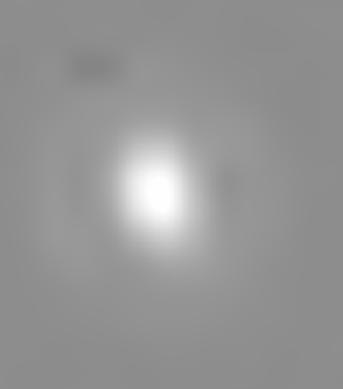
 0007336448 0.5 deg scan, 64" offset |
 0007336704 0.5 deg scan, 148" offset |
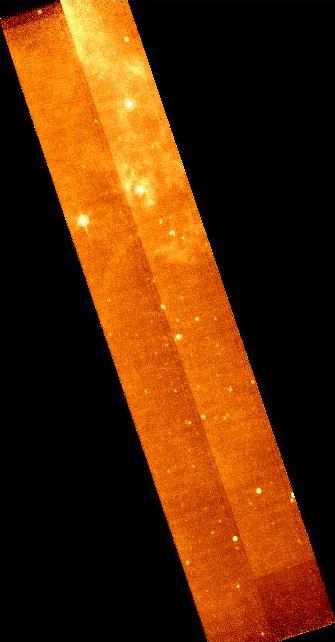 0007336960 0.5 deg scan, 302" offset |
 0007337216 1.0 deg scan, 276",111" offsets |
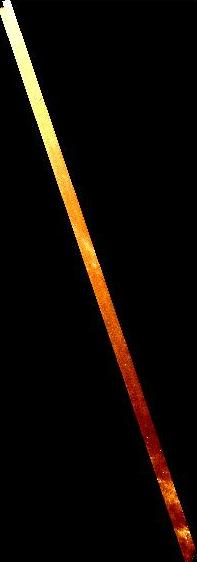
 0007336448 70um Leg 1 |
 0007336448 160um |